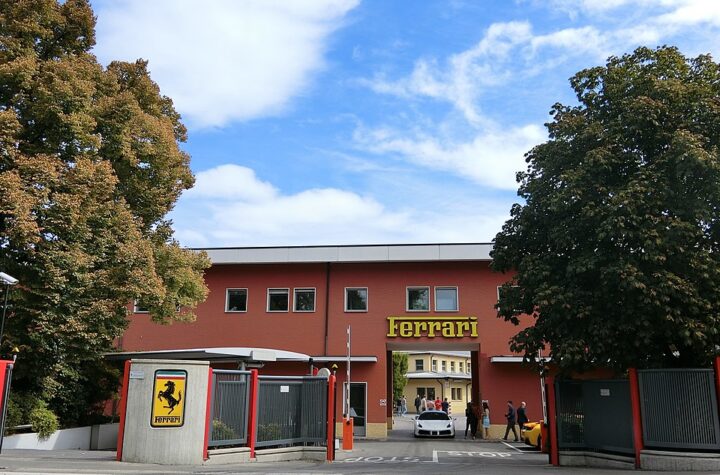
ANSYS’ latest software upgrade is more evolutionary than mathematical.
Software updates aren’t always meaningful. Often times they are pop up windows that are never clicked. The inverse is also true – some software updates are born out of necessity and a natural evolution of sorts. Something more along these lines is the story of the newest software offering from ANSYS.
 |
| The “Classic” ANSYS Interface which provides simulations such as this model of a deformable flow control device. |
“In addition to the many enhancements related to multiphysics simulation and solver performance, ANSYS 8.0 enables companies to manage and reuse legacy data,” says Mike Wheeler, vice president and general manager of the Mechanical Business Unit at ANSYS Inc.
Often a user needs to include more than two physics to achieve a realistic simulation, and there is a need to facilitate coupling to external analysis codes, this is a situation where multiphysics capabilities are useful. ANSYS says they have had multiphysics technology since the 1980s, and continue to expand such capabilities with their new Multi-field solver, which is designed to allow for the coupling to external code.
8.0’s Multi-field solver provides a framework to solve coupled-field problems. The new version is an automated sequential coupled physics solver applicable across all physics available in ANSYS Multiphysics. With the Multi-field solver, each physic can have totally independent meshes and solution settings. This allows the multiphysics problem to be divided up easily amongst single physics experts (both within a company or to external consultants).
“Many CAE tools today ignore the reality that many development organizations have a tremendous amount of simulation data from previous projects. This data represents a significant financial investment and contains valuable intellectual property. In ANSYS 8.0, we now provide our customers the tools to reuse and reevaluate finite element models which will generate a greater return on their simulation data investment.”
The genesis of the upgrades to the new system echo what is being offered to the customers, in the area of legacy data. One of the most significant upgrades in the new system has to do with the meshing capabilities.
 |
| Two available modules help accelerate “what-if” analyses within the ANSYS environment. |
The evolution of the meshing aspect of the software, according to Wheeler, is the aggregate knowledge the company has accrued on meshing coupled with input from customers is the basis for most of the advancements in this area of the software.
“The next step is the actual meshing itself. And this is where the actual algorithms come into play. We’ve made substantial performance/memory improvements. What the speed of the meshing is doing is enabling the customers to reduce computations that might have taken days to hours. They are applying the technology in parts of the process where in the past, they may not have applied it at all. Customers don’t want to make approximations. They want to solve their exact geometry. In the past being able to solve geometries meant simplification of the designs.”
This practice is also known as ‘defeaturing’ which in a reaction to being outgunned by the situation due to a lack of time or technological firepower. Offering shrunken permutation times is one of the biggest selling points for ANSYS. What better way to justify the cost of your product to a customer than showing them how many dollars in man hours/computers they can save? “The big issue in doing simulation is how long the process takes. It’s not a matter of if they have the skill set to answer their questions, it’s just a matter of time. Fundamentally what it’s (Workbench) doing is reducing time to get an answer.”
8.0 builds on its Workbench integration capabilities, featuring advances like pretension bolt loads, hex dominant meshing and mixed contact. The mixed contact formulation capabilities are made to give users the ability to automatically create and more rapidly modify virtually any type of contact for surface and solid geometries.
With the general speed enhancements to the system, especially with the meshing, tuning up the mathematical dexterity of the programs was not overlooked.
“We spend a lot of development resources in improving the performance of our solving capabilities. The reason I say performance is because performance is a combination of actual CPU time along with actually having the necessary computer resources to do it. In 8.0 we’ve come up with two new distributive solvers and performance improvements to all our existing solvers. The net effect has been very positive. We’ve been seeing improvements in the range of 30 to 50 percent time reduction but have received reports from customers that in some cases the time has been reduced by more than that.”
Linear Equations are also heavily used for ANSYS CAE purposes. Linear equations, in essence, can answer questions that have to do with durability, stiffness and so on, which are clearly concerns for customers in the automotive sphere.
“Force is equal to stiffness times direction, and that governs a host of engineering problems that relate to durability, stiffness which in turn goes to overall ride of the car. All the things we would consider that influence what makes quality in a car,” Wheeler explains. ANSYS applies what they refer to as an ‘agile method’ of developing their software. One operation within this method is the use of proxy customers. Wheeler details some of the process:
“The product teams drive development. Within each product team will be from 8 to 10 projects, new features, each one of those new features has we what call a proxy customer. And that is somebody out in industry who is going to give us constant feedback. We typically send out software to those guys “C just to spend 10 minutes to send us some feedback every two weeks. This process gives us very frequent interaction with those customers.”
In the end, all the physics and math boil down to a much simpler formula. Constant customer input helps provide an exponentially clearer picture of what kind of software designers need. The entire process and product was best described when Wheeler says, “If I want to respond at the speed of design then I’ve got to provide my information back to the design engineer in hours, not days or weeks.”
While complex – it’s just that simple.














More Stories
Horse Logos In Cars – Car Brands With Equine History
Durable Engine Labels for Harsh Automotive Conditions
How Does Motorcycle Transport Work? Costs, Methods & Companies